Macro Calculator
This free, easy-to-use macro calculator gives you your optimal macronutrients and calories. It’s a weight loss or muscle gain calculator for both women and men.
Combine with macro counting or flexible dieting to reach your goals faster.
How to get leaner and stronger?
Our comprehensive macro-based fat loss program shows you how. Learn more
How do macros work?
The foods we eat are made up of three macros (macronutrients). These are carbohydrates (carbs), protein, and fat.
Chicken is high in protein but has no carbs; rice is high in carbs but has very little fat or protein. The three macronutrients provide the body with energy and raw materials for growth and repair.
By calculating the appropriate daily calorie amount for you, we can then break this down into the best macronutrient ratios to achieve weight loss.
Basic steps for macro counting
- Enter details into the calculator
Make sure to choose the correct goal. - Take note of your calories and macros
These will be the targets you are aiming for each day. - Track your macros
Use an app or pre-plan your meals. - Measure results
Don’t use basic weight scales.
Use proper body composition scales (we recommend Renpho) to measure fat and muscle mass changes.
What is a good macro ratio for fat loss or muscle gain?
Your macros should be based on your Total Daily Energy Expenditure (TDEE) and goals.
The calculator defaults to the best macro ratio proven to work for most people.
This ratio is:
- 30% fat
- Protein is 0.65 grams per pound of body weight,
- The remainder is carbs.
Depending on your goal, this will be either a calorie deficit or a surplus.
You can go further and make more adjustments: Perhaps you’re an extreme endomorph and do better with fewer carbs. Or perhaps you have one kidney and need to eat less protein.
You can fine-tune your results with a bit of math. See how to change your macros here.
What is a good protein ratio?
Rather than a percentage, proteins are based on your body weight. Our calculator has three settings:
- Moderate adjusts the ratio to 0.65 grams per pound of body weight.
This is appropriate for sedentary individuals or people with higher body fat percentages. - High is for active people with moderate strength training and an average body fat percentage.
- Maximum will set the ratio to 1 gram per pound.
This amount is good for bodybuilding and gaining muscle mass. You must be doing intense training.
Find out how to fine-tune your protein ratios when counting macros
Fat macro ratio
Set fat at 30% of daily energy expenditure.
Most people do very well with this amount of fat. See more about choosing the best macro fats. Because of high-fat diets like keto, many people are now eating more fat than they need to.
Carbohydrate macro ratio
Once you’ve calculated protein and fat, the remainder of your daily calories should be from carbohydrates.
Carbs fuel your body and workouts – and are the body’s preferred energy source.
If you are coming from a low-carb background, this may seem high. However, according to respected nutritional research, this is a moderate amount of carbs.
If you are eating according to your TDEE, the notion that carbs cause weight gain or stop fat loss is incorrect.
Using as a Calorie Deficit Calculator
As a weight loss calculator, this tool establishes a safe calorie deficit only.
The Lose option puts you in a 20% calorie deficit, promoting safe, steady weight loss.
The best macro ratio for body recomposition
If you want to recompose your body (lose fat and gain muscle simultaneously), then use the body recomposition calculator.
Macro ratio for maintenance
The Maintain button shows you the macro levels to maintain your current weight.
This is great if you have lost weight and don’t want to gain it back.
Macro ratio for muscle gain
The Gain button puts you in a 20% calorie surplus.
The macro breakdown is designed to build muscle fast in conjunction and must be combined with a comprehensive weight training program.
Underweight people can also use it.
TIP: Try starting with the maintenance goal and gradually increasing calories if you want lean muscle gains.
Calculating macros using your body fat percentage
The calculator uses your body weight to determine calories and macros.
However, you can obtain superior results by using your body fat percentage. The calculator allows you to choose which method: Normal for body weight, Lean Mass for fat percentage.
When to choose the Lean Mass Formula
If you are lean (have a low body fat percentage), choose the Lean Mass formula and enter your body fat %.
If you are classified as obese and have a lot of weight to lose, the lean mass formula is superior. You can read more about macro counting and obesity.
Help? Calculate your ideal body weight or get an assessment of your body fat percentage.
Why the difference? Muscle cells burn more calories than fat cells, so the more accurately we measure this, the better your results will be.
How to calculate macros per meal
You can break this down into meals once you’ve calculated your daily macros in the calculator.
Choose from 2 to 6 meals daily to see the macro ratio you can track for each meal. For some people, this is easier, but for others, this is too much detail.
Do what works for you.
Meal Plans
See a 5-day macro-based meal plan. It includes three meals and two snacks per day.
Macro calculator activity level settings
A higher activity level means a higher daily calorie goal.
For example – if you maintain your weight at 2,000 calories per day, adding vigorous daily exercise means you need more calories to maintain your weight.
If you are sedentary and trying to lose weight, adding exercise will increase your daily calorie goal.
The idea seems counter-intuitive, but more energy is required to fuel your workouts. More workouts lead to increasing metabolism; therefore, more fat is burned!
Undereating is one of the leading causes of the weight loss plateau.
So many of our clients previously “hit the wall” with dieting. They would continually reduce calories, stop losing fat, and gain weight when they eat a little more.
Macro counting defeats this by prescribing the right food and calorie levels.
Which activity level do I choose?
- Sedentary: Just regular everyday activity like a bit of walking, a couple of flights of stairs, eating, etc.
- Light: Any activity that burns 200-400 calories (females) or 250-500 calories (males) over your sedentary amount.
- Moderate: Any activity that burns 400-650 calories (females) or 500-800 calories (males) more than your sedentary amount.
- Extreme: Any activity that burns more than 650 calories (females) or more than 800 calories (males) in addition to your sedentary amount.
Other options for determining your calorie burn
- Use our calories burned calculator – it accurately assesses over 380 activities.
- Use a fitness tracker – like a Fitbit or Apple Watch (note that they can overestimate calorie burn).
- Use a suitable app – like MapMyFitness
Why should I eat more when I exercise more?
High physical activity not fueled with enough calories will lead to muscle catabolism (breakdown of muscle fiber).
This lack of nutrition could stall your weight loss, so eat up if you love to exercise!
I’ve got my macros – now what?
Once you’ve identified your target daily macros, you must determine the macros in all your foods.
By tracking them daily, you can reach your recommended macro targets that encourage fat loss, muscle gain, or whatever your goal may be.
You can learn more about the macro counting system and the flexible dieting philosophy. Many people use an app like Myfitnesspal to track macros.
For more specifics on what to eat – see a sample macro meal plan or a list of macros for familiar foods.
View article sourcesSources
- Mifflin, M. D., St Jeor, S. T., Hill, L. A., Scott, B. J., Daugherty, S. A., & Koh, Y. O. (1990). A new predictive equation for resting energy expenditure in healthy individuals. The American Journal of Clinical Nutrition, 51 (2), 241-247. Link
- McArdle, W. D., Katch, F. I., & Katch, V. L. (2010). Exercise physiology: nutrition, energy, and human performance. Lippincott Williams & Wilkins. Link
- Jequier, E. (1994). Carbohydrates as a source of energy. The American journal of clinical nutrition, 59(3), 682S-685S.
- Lemon, P. W., Tarnopolsky, M. A., MacDougall, J. D., & Atkinson, S. A. (1992). Protein requirements and muscle mass/strength changes during intensive training in novice bodybuilders. Journal of Applied Physiology, 73(2), 767-775. study abstract link
- Grundy, S. M. (1999). The optimal ratio of fat-to-carbohydrate in the diet. Annual review of nutrition, 19(1), 325-341. abstract
- Conlin, L.A., Aguilar, D.T., Rogers, G.E. et al. Flexible vs. rigid dieting in resistance-trained individuals seeking to optimize their physiques: A randomized controlled trial. J Int Soc Sports Nutr 18, 52 (2021). https://doi.org/10.1186/s12970-021-00452-2
2,104 Comments


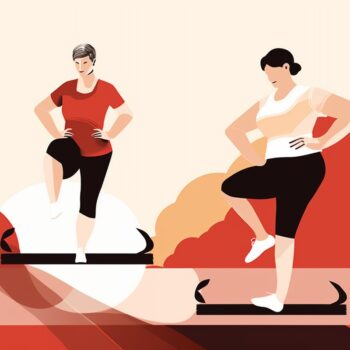 Menopause Macro Calculator
Menopause Macro Calculator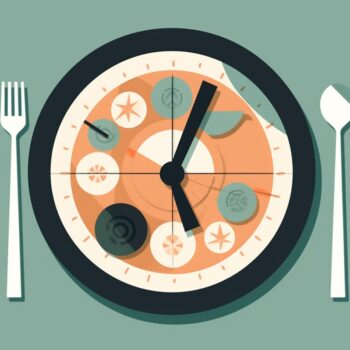 Intermittent Fasting Calculator
Intermittent Fasting Calculator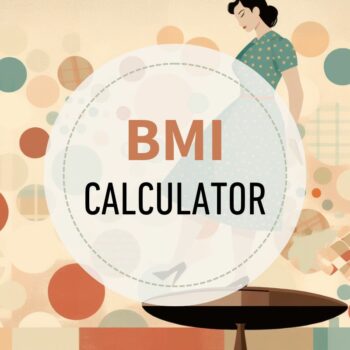 BMI Calculator
BMI Calculator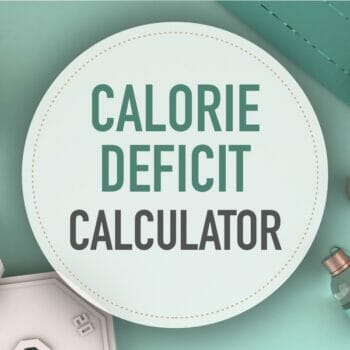 Calorie Deficit Calculator
Calorie Deficit Calculator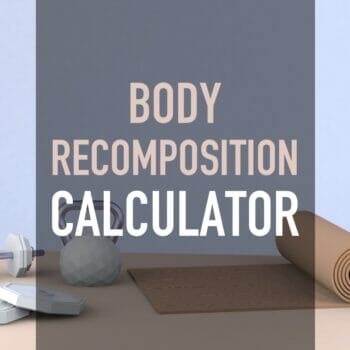 Body Recomposition Calculator
Body Recomposition Calculator
Hi Ted,
I am 55 year old female, current weight 186, height 5 ft 4 in, started intermittent fasting 3 weeks ago. My first meal is at 1pm, have fruit, yogurt, nuts. Second meal at 5-6 pm have meat, carbs. Since I am only having one big meal, have issues with getting protein required. What or how can I get required daily protein. Can’t eat soy products. Please help 😞
Hi Blanca, Why is your eating window so limited? A natural 12-14 hour fasting period each day is more than adequate. Also, the lowest protein setting would be more than adequate for your situation. Try to be less restrictive and more flexible.
hi! i m Evi. 37 yo 167cm height 70 kg. i train 4-5 days 45to 1.5h per week and i wish to drop 10% fat maintiming my muscle mass or increasing it if possible. I am totally confused with the macros although from my understanding fat loss is related to total cal per day?!?
Hi Evi, Your energy balance determines weight loss but ensuring a proper macro balance ensures things like losing fat and not muscle as well as making sure your body has the optimal nutrition to perform its best during your exercise. Perhaps read my article about counting macros to help explain this in more detail? Counting Macros for Losing Weight Without Starvation
Hey Ted! I’m a 35 yo, 5’ 6”, 140Lb female, have been tracking macros (50%c, 30%p, 20%f) and carb cycling (two consecutive low carb days at 50g net), and intermittent fasting (8/16 split) on and off for over a year now. I run (15-25 miles/week) and lift weights 5-6 times a week. I have been stuck with 10 pounds to lose since January. I don’t know what else to do to get this bit of weight off! I kept it off doing this same thing for 6 months (summer 2020-dec 2020) and now I can’t get it off! Any advice is appreciated!
Hi Shay, I would guess that you aren’t fueling your workout days properly. I encounter this all the time as to why people seem “stuck”. Here’s an article that I’ve written about it. If You Want to Lose Weight, You Have to Start Eating!
New to this. So got a lot of learning to do. Fingers crossed I can make some good progress in my weight loss. Heard amazing things about the product.
Gonna look into a macro counting app right away!
Oh
Hi there I love your information and this is the most understanding I’ve gained about figuring out macros. But how do I combine this knowledge with carb cycling as well. Any advice is greatly appreciated.
Hi Trish, Carb cycling isn’t needed and just adds restriction here’s an article I’ve written on the subject. Carb Cycling While Flexible Dieting
Hi Ted, I always sleep late now and wake up at around noon/midday, because I snack a lot more now than I did when I was younger, so I don’t eat breakfast in the mornings anymore because I’m scared of accidentally gaining weight. So I just have two meals a day now, something at lunch and then a cooked meal at dinner, with snacks for the rest of the day. I never used to do this when I was younger but like I said I didn’t snack much at all back then either. My diet is a lot more varied now, with some “junk” foods thrown in as well as fruits and veggies etc. It never used to bother me when I was younger but I was a lot skinnier back then, and people say I look much healthier now. But I’m scared now that if I start getting up early in the mornings again, then I would have to eat a morning meal, and then, throughout the rest of the day, consume too low or too little calories which will lead to me unintentionally losing or gaining too much weight? Could you maybe help me past this? If it works for me, whatever the reason for doing it is, and it satisfies me, then there’s no reason to worry or try to change it, right? Otherwise, how would you give advice on how to change this habit? Would it just be a matter of adjusting portion sizes if I’m eating too much or too little? Thanks.
Hi Charlotte, Thanks for sharing. It can be pretty freeing to understand how much energy your unique body needs during a 24 hour period and then learning how to eat to accomplish your goals in relation to that amount. What’s also great is the flexibility it offers. You can still have those foods/snacks you love and you can still eat during an 8-10 hour window if you want to. I’d be happy to calculate everything for you and get you started on the journey the right way. Please check out my coaching options and we’ll take it from there.
Hi😊
I have to stop Keto diet as I have some health complications and malnutritioned myself.
Skipping meals and doing IF altogether with 5x a week exercise has led me to almost collapse.
Please do not judge me🙈
I have had eating disorder at younger age.
I am 5ft 6inches and 115 pounds.
If I gain weight I want to gain it through muscles and stop being so obsessed with carbs.
Is it ok to start also with exercise or first adjust my macros and then add the exercise.
Thank you.
Hi Zuzana, No judgment here. The dieting world is a place full of misinformation and bad advice. You want to factor two sets; A rest day set and an exercise day set. Start at your maintenance levels and then gradually add a bit more to promote lean gains. Macros for Gaining Muscle and Cutting Fat
Hi Ted, can you please help me calculate my macros? I’m counting my macros and have been doing so for a few months and losing weight. I’m lifting heavy daily and very active daily. My current macros are here: 2020 calories made up of 110g protein // 60 g fat // 260 g carbs and the scale is continuing to drop. I’m 35 yo and 133 lbs. I am pregnant and need help calculating my macros now – assuming the current breakdown of macros above is not my maintenance – what should my current maintenance be and I know based on the “maintenance” level I need to add 300 calories for pregnancy trimesters 1-2. What do you recommend?
Hi Ava, Great job so far and pregnancy does indeed complicate things. I’d have to look at everything in detail before I could calculate things for you and could only do so as part of my coaching services here: Personalized Macros Coaching
Looking forward to results
Hello,
I am a 40 year old male, trying to lose body fat and according to this website, I should be eating 215 gms of carbs, and 155g of protein. I was curious, if your trying to lose weight/body fat you decrease your carb intake? is this accurate or can you provide more clarity regarding this.
Thanks
Hi Robert, Counting macros reduces calories (energy consumption) in a balanced way instead of targeting one macro group. It’s more precise because it is looking at the energy needs of someone with your unique stats and then establishes a safe deficit. Restricting carbs is just a method of calorie restriction and carbs in of themselves aren’t the problem. Here’s a good article of mine to read that will give you more info. concerning this method: What is Flexible Dieting? A Macro Based Diet Plan to Get Started Quickly
I have always been told to eat in a deficient, which lead me to eating around 1600 calories a day. But my macros say I need to eat more around 2000 max. Is under eating unhealthy? And, why are so many carbs recommended?
Hi Daniel, You have to be in a deficit to lose fat but you don’t want that deficit to be too severe. Otherwise, your muscle tissue will break down and thus your metabolic rate will slow. Carbs are your body’s preferred fuel and it’s actually not high but moderate. We live in a world that has a skewed view of carbs because of all the low carb fads and the myths they perpetuate.